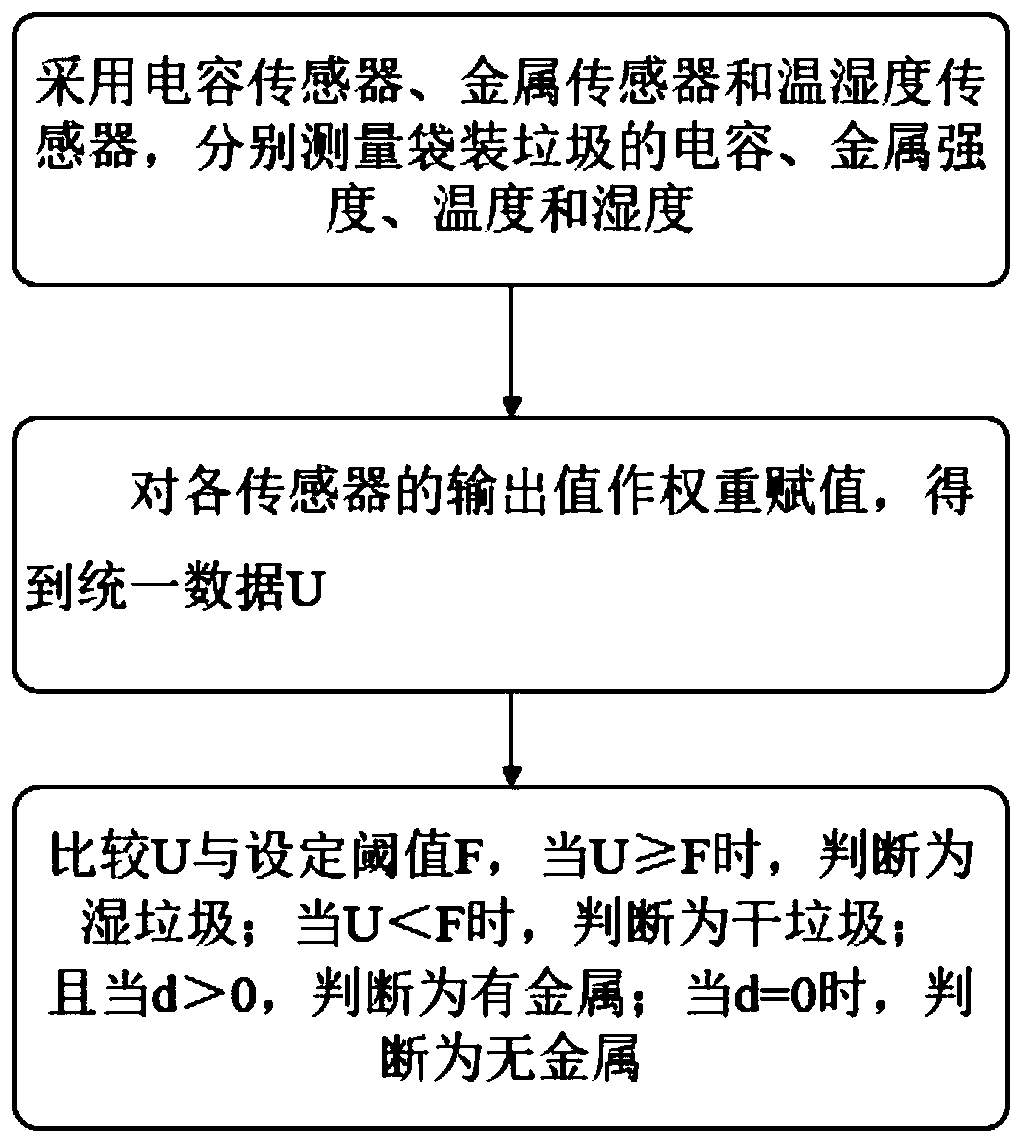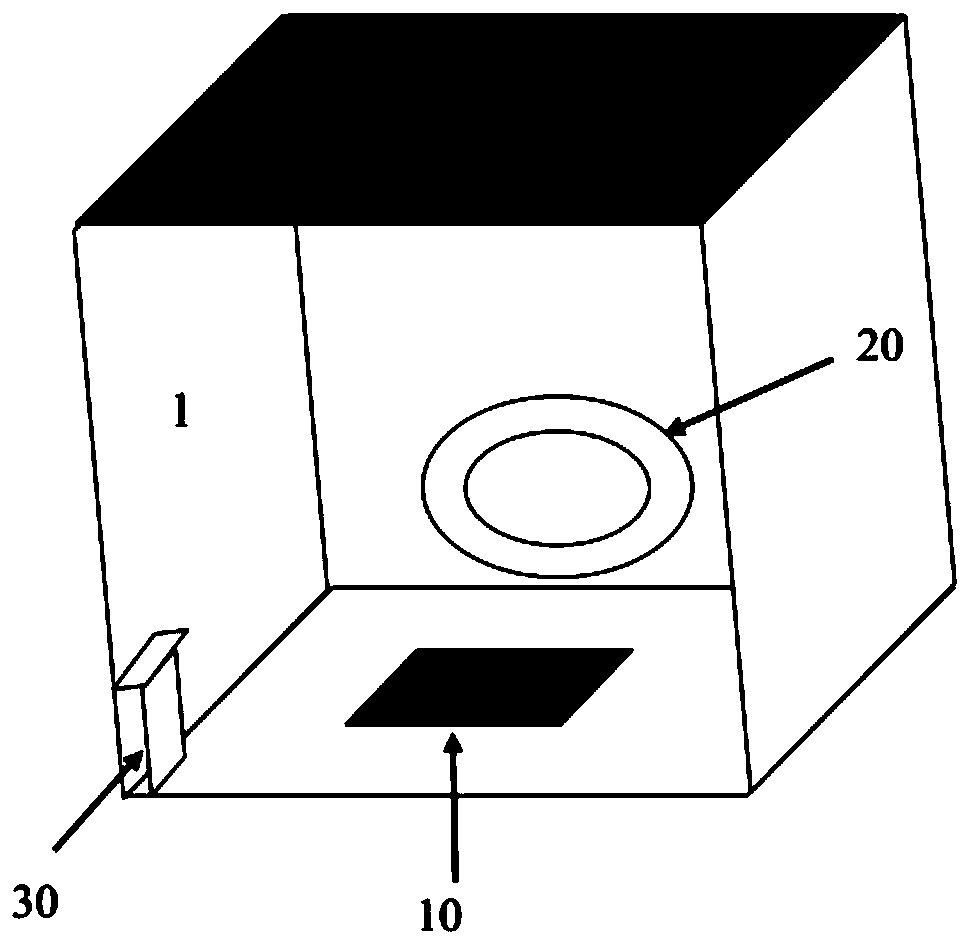Bagged garbage dry and wet identifying method
An identification method and technology for garbage, which are applied in measurement devices, instruments, material analysis by electromagnetic means, etc., can solve the problems of large random probe position, time-consuming and labor-intensive, liquid outflow from wet garbage bags, etc. The effect of garbage collection, good detection and judgment ability, and promotion of classification awareness
- Summary
- Abstract
- Description
- Claims
- Application Information
AI Technical Summary
Problems solved by technology
Method used
Image
Examples
Embodiment Construction
[0029] The present invention will be further explained below in conjunction with the accompanying drawings and examples.
[0030] like figure 1 As shown, the dry and wet identification method for bagged garbage of the present invention comprises the following steps:
[0031] S1, using capacitive sensors, metal sensors and temperature and humidity sensors to measure the capacitance, metal strength, temperature and humidity of bagged garbage respectively;
[0032] S2. Assign weights to the output values of each sensor to obtain unified data U:
[0033] U=p*a(1-m*z-d*n) (1)
[0034] In the formula, p is the ratio of the dielectric constant of water at the ambient temperature to the dielectric constant of water at the average temperature, a is the average capacitance value, m is the ratio of the average humidity to the ambient humidity, d is the average metal strength value, and z is the value of the environmental humidity factor weight; n is the weight of the metal factor; ...
PUM
 Login to View More
Login to View More Abstract
Description
Claims
Application Information
 Login to View More
Login to View More - R&D
- Intellectual Property
- Life Sciences
- Materials
- Tech Scout
- Unparalleled Data Quality
- Higher Quality Content
- 60% Fewer Hallucinations
Browse by: Latest US Patents, China's latest patents, Technical Efficacy Thesaurus, Application Domain, Technology Topic, Popular Technical Reports.
© 2025 PatSnap. All rights reserved.Legal|Privacy policy|Modern Slavery Act Transparency Statement|Sitemap|About US| Contact US: help@patsnap.com



